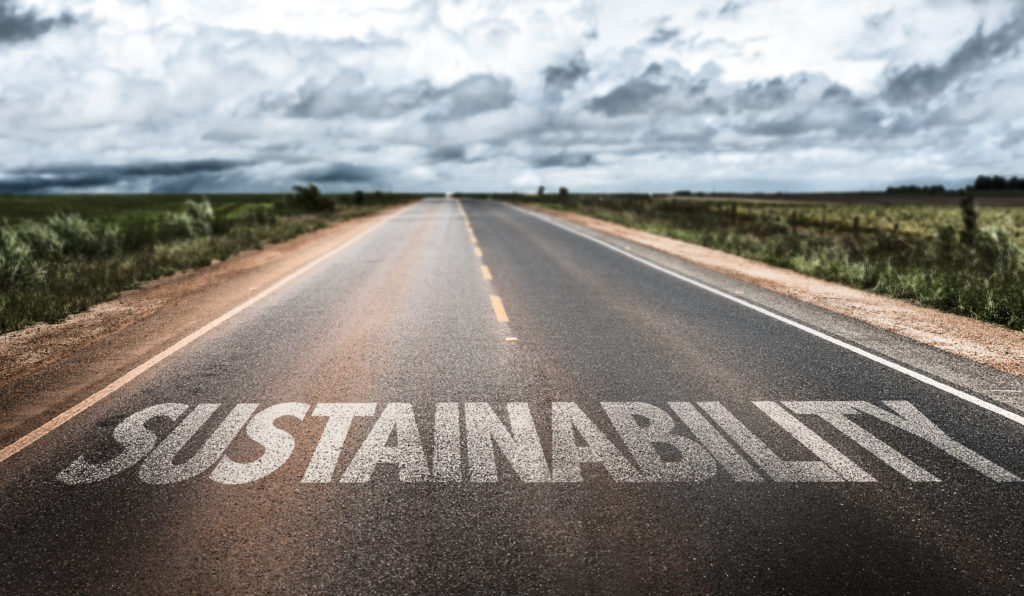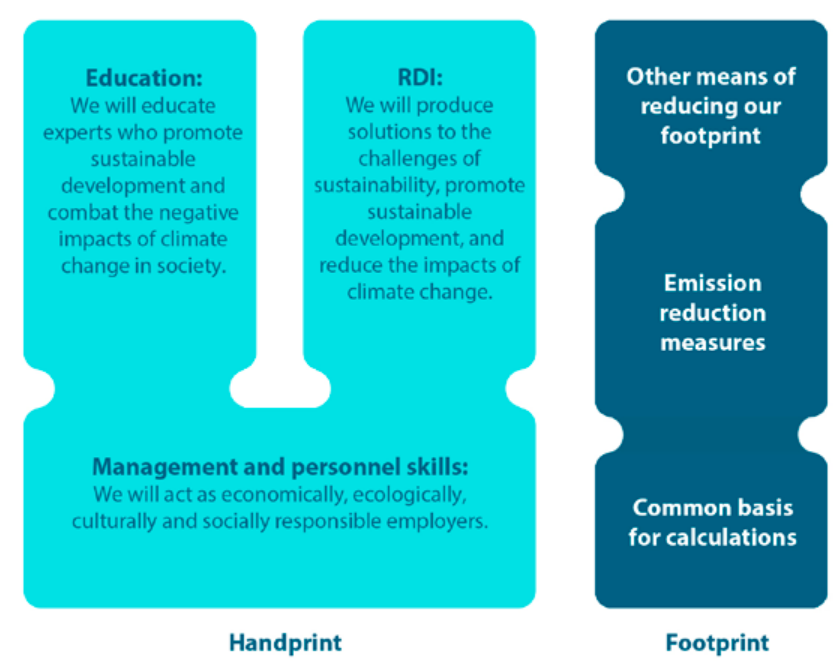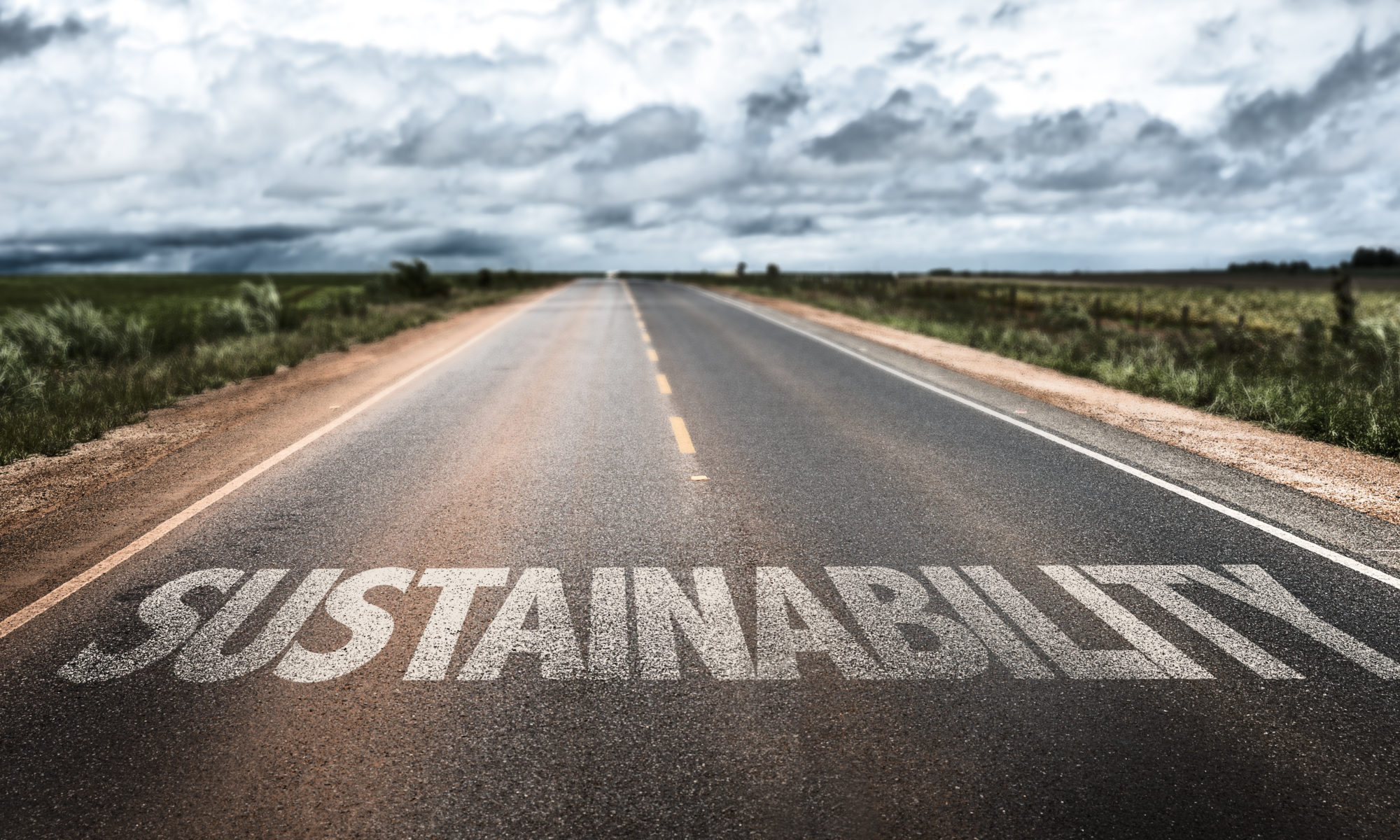Jennie Elfving

In recent years, there has been an urge to include sustainability in education, but also to make sure that the higher education institutions act as responsible organizations themselves. In research, it has been widely recognized that higher education institutions (HEIs) have the role of promoting the various actors that participate in sustainability efforts and enhancing their contributions regarding the three pillars, namely environmental, social, and economic sustainability (Frizon & Eugenio 2022, 364; Lim et al. 2022, 1).
In other words, there is a request for HEIs to both talk the talk and walk the walk. In this paper I will look at, why sustainability has received so much attention in the last years, how it has been included in higher education, and what kind of future developmental needs can be identified.
In the 2030 Agenda for Sustainable Development, adopted by all United Nations Member States in 2015, education is identified as one of the 17 sustainable development goals (SDG). The fourth SDG is to ensure inclusive and equitable quality education and promote lifelong learning opportunities for all (United Nations 2022). The fact that education is mentioned as a goal of its own shows, what a crucial role education plays in promoting sustainability and generating change. However, the role of education is far from limited to just this one SDG. I even dare to claim, that education and educational institutions play a crucial role in implementing all of the strategic goals. If we want to see change, we need more knowledge and we need education.
Due to the above mentioned, higher education institutions have been considered to have an important role in implementing and enhancing the sustainability goals, since sustainable development was put on the agenda of the United Nations (Frizon & Eugenio 2018, 3; Lim et al. 2022, 2). Also UNESCO has urged HEIs to play their collective role, in order to achieve the targets of sustainable development goals (Lim et al. 2022, 1). This has been manifested in different ways. The most obvious way is perhaps how the topic sustainable development has been included in the curriculums of the HEI’s (Leal Filho et al. 2019, 684). The role of the HEI is highlighted also in other contexts and in the agenda for a variety of organizations. For example, the Finnish Ministry of Education has stressed the role of HEI’s as promoters of sustainable social development (Ministry of Education and Culture 2021). Moreover, the HEI’s themselves has pointed out the role of research and development, and how they play an important role in finding new solutions to the current problems we are facing (Arene 2020).
Sustainability in higher education
As Friman et al. (2018, 367) show, the curriculum of the HEI is an important tool for controlling what is included in the university courses and what the students learn. The role of the curriculum is to enhance students’ skills and competences as well as influence attitudes and values. Research shows that sustainable development nowadays is included in the curriculum of most universities, and knowledge about sustainable development is considered to be essential for students. How much teaching is included and how the subject is thought varies quite a lot from university to university, and even significant variations are to be found even within the same university (Boström et al. 2018, 8; Friman et al. 2018, 368; Leal Filho et al. 2019, 684).
The role of HEI’s has traditionally been to educate experts in different fields. That is also the case when it comes to sustainable development, but what is different here is that we need experts who are capable of scrutinizing and solving wicked problems (Friman et al. 2018, 370). Therefore, we need to involve people from different fields and with different backgrounds. We cannot solve the problems we currently face if we do not take a multidisciplinary approach. In a study on learning for sustainable development by Boström et al. (2018, 13), the researchers identified a bias towards an individualistic and cognitive view on learning as transfer of information. They suggest a transformative learning approach would be more suitable. In a transformative learning approach learning does not simply happen based on progress in the knowledge base, but implies a process of change for both organizations and individuals.
It has also been stressed that strategical planning is essential in the process to develop sustainable solutions and raise awareness about sustainability. Leal Filho et al (2019, 683) claim planning is the starting point for creating a joint vision and making the commitment needed in order to make a change. Based on their research, Leal Filho et al. (2019, 684) conclude that universities need a planning framework for sustainable development and right now many universities are lacking this kind of framework. Moreover, successful work within the field of sustainability also requires an official body responsible for the implementation of the sustainable development programme, resources for implementation as well as good communication.
As Frizon and Eugenio (2022, 10) point out, the role that HEI’s play in knowledge creation has wide-ranging implications for global efforts to find sustainability solutions. In this context, knowledge creation cannot, and should not, be restricted to teaching and learning. The role of research and development is crucial when it comes to finding new technological solutions, enabling technology transfer and finding more sustainable business models. Purcell, Henriksen and Spengler (2019, 1353) claim that the role of universities is to function as the engine of transformational sustainability toward delivering the sustainable development goals. They suggest universities should serve as living labs to enable multidisciplinary development and research.
In a study comparing sustainable development in education in Finland and Brazil, Friman et al. (2018, 366) noticed that there are significant differences in terms of national sustainable development policies and in terms of how government steers the HEI’s in their sustainable development work. In both countries the HEI’s include sustainable development in their work and in their curriculums. But in Finnish sustainable development policy programmes, governmental officials clearly count on HEI’s to take a central role in the work. For example, in agreements between the Ministry of Education and Culture and individual HEIs a clear statement, that all HEIs in Finland should promote sustainable development in their operations, have been included.
One example of the Finnish Government’s efforts to promote sustainable development is the Sustainability Roadmap that was launched in 2021 (Finnish Government 2021). In this policy document the Finnish government sets the objective of a socially, economically and ecologically sustainable society that has been lined out in the Government Programme. One main goal in the programme is to raise the level of education and competence in order to support employment and renewal of the labor market. The action points are set out more in detail in a separate roadmap for developing sustainable education (Ministry of Education and Culture 2021). The main goals are to improve access to higher education, shorten the actual duration of the studies, increase the number of international students in Finland and to promote continuous learning.
The role of HEIs in promoting sustainability can shortly be summarized in two points: providing education and conducting research on the topic. As such, very familiar roles to university organizations. The novelty lies in the way it is done. We cannot use old models to solve new problems.
Footprints and handprints made by universities of applied sciences
All Finnish universities of applied sciences have joined together in order to promote sustainable development. The work began in 2019, and in 2020 they published a programme for sustainable development and responsibility. The programme is based on UN’s Agenda for Sustainable Development, which can be found at the webpage of Arene, The Rectors´ Conference of Finnish Universities of Applied Sciences (Arene 2020). All Finnish universities of applied sciences have committed to this programme. The main goal is to reduce the footprints of the HEI’s and to increase the impact, i.e., generate bigger handprints. The goals have been summarized by the universities of applied sciences in figure 1.

As can be seen from the figure, and noted in the programme as well, the universities of applied sciences emphasize handprints more than footprints. This is not to say that footprints are not important, but the HEI’s have clearly identified their possibility to make an impact and therefore reducing footprints is not enough. Through education and research, a lot of students, staff members and companies can be reached and included. This opens up opportunities to raise awareness, educate future experts and develop new innovations. (Arene 2020.)
In order to enhance sustainability through education, the organizations have committed to ensuring that all graduates will have at least a basic understanding of sustainable development, to provide education for lifelong learning and to promote accessibility of higher education so that everyone regardless of their background, financial situation, disability, gender etc. will have access to higher education. In order to improve sustainability through research and development, the institutions have committed to developing criteria for sustainable and responsible R&D, to produce solutions to sustainability challenges and promote sustainable development in cooperation with the higher education community, business life and the public sector. (Arene 2020.)
The universities of applied sciences have set out to be carbon neutral in 2030. In order to achieve this goal, they have developed a joint model for calculating the emission of each university and an updated calculation is to be done annually. They have also agreed on jointly planned measures to reduce carbon footprint and emissions. The universities of applied sciences state that at the moment, the most significant contributions to the carbon footprint are related to commuting and travelling, real estate, food services, and procurements. Consequently, the planned measures will also be related to these areas. (Arene 2020.)
In 2022, a steering group was appointed by Arene with the mission to renew the joint competences for students at universities of applied sciences. The purpose of listing joint competences is to identify what kind of working life competencies is needed across different fields of education and generate a national framework. How the identified competences are included in the curriculum is up to each university of applied sciences. One of the listed competencies is sustainable development. According to the policy document, every student graduating from a Finnish university of applied sciences should have the basic knowledge about sustainable development, know how to promote sustainable development and be able to function as a responsible member of the working life and the community. (Arene 2022.)
Discussion
Having said that the HEI’s in general play a crucial role and knowing that Finland in many ways is a forerunner in the sustainability work, one must ask the question what the Finnish HEI’s should do, and have they done enough? In this paper, I have chosen to focus especially on universities of applied sciences. As can be seen, sustainable development is on the agenda of the universities of applied sciences – it is included in the curriculum, and it is the core of many of the R&D projects carried out. In other words, they are doing a lot, but the question still remains if they could do more and better?
Based on what has been stated previously in this paper, I would like to suggest the following aspects should be considered in future development:
- Promoting interdisciplinarity: we are facing very complex problems and the solutions will be found only if we co-operate on a broad basis. This goes both for teaching and research. Through education students learn to become experts in their own field of studies, but it is just as important to learn how to co-operate with students from other fields and look at the problems from different points of view. The same goes for research, we need mixed teams and a broad knowledge base. We also need to make sure we include companies and other organizations from outside the HEI’s in the project.
- Ensuring a strategic approach and enough resources. Making policy documents and programmes is a good start, but it does not change anything if the policies are not implemented. In the case of universities of applied sciences, a good framework has been created through the work of Arene (Arene 2020), but it is up to each HEI how they implement it and use it in their own institution. It will not happen by itself, so a plan is needed, someone has to be appointed as responsible for the work and resources in the form of working hour and money will be needed.
- Requiring accountability. Although the work is based on free will, and should so stay, I claim some sort of reporting responsibility is needed. It should not be too complicated and should not be based mainly on a control function. But there is a need to measure progress and communicate the results.
Summary
In this paper, I have looked at the concept of sustainability from the perspective of higher education. As has been shown in the previous chapters, higher education institutions play an important role in promoting sustainable development. The reason why they play such an important role can be summarized in two points. First of all, they educate young people and future experts. Thus, they have the power to set the agenda for their learning, meaning in this context that they make the curriculum. Of course, they cannot force the students to learn, but they can function as a spotlight and decide what will be thought and what will be required from the students. Secondly, they are experts in research and development, and we cannot expect any change to happen if we are not able to generate new knowledge and innovations. The HEI’s have expertise in the field of research, they have the networks needed for interdisciplinary work and they have the incentives needed to spread and share the results. Hence, the role of HEI’s is not restricted only to the 4th SDG, but embraces all SDGs. The Finnish HEIs have come a long way and they are clearly willing to take responsibility for promoting sustainable development. The future will reveal how successful we have been.
List of references
Arene 2020. Sustainable, responsible and carbon-neutral universities of applied sciences. Available at: http://www.arene.fi/wp-content/uploads/Raportit/2020/Sustainable%2C%20responsible%20and%20carbon-neutral%20universities%20of%20applied%20sciences.pdf?_t=1606145574 Accessed: 1.12.2022.
Arene 2022. Suositus ammattikorkeakoulujen yhteisistä kompetensseista ja niiden soveltamisesta. Available at: https://www.arene.fi/wp-content/uploads/Raportit/2022/Kompetenssit/Suositus%20ammattikorkeakoulujen%20yhteisiksi%20kompetensseiksi.pdf?_t=1642539572 Accessed: 1.12.2022.
Boström, M., Andersson, E., Berg, M., Gustafsson, K., Gustavsson, E., Hysing, E., et al. 2018. Conditions for transformative learning for sustainable development: A theoretical review and approach. Sustainability 2018, 10, 4479. Available at: https://doi.org/10.3390/su10124479 Accessed: 1.12.2022.
Finnish Government 2021. Government’s Sustainability Roadmap. Publications of the Finnish Government 2021:73. Available at: http://urn.fi/URN:ISBN:978-952-383-797-3 Accessed: 1.12.2022.
Friman, M., Schreiber, D., Syrjanen, R., Kokkonen, E., Mutanen, A. and Salminen, J. 2018. Steering sustainable development in higher education – Outcomes from Brazil and Finland. Journal of Cleaner Production 186 (2018) 364-372.
Frizon, J. A. & Eugenio, T. 2022. Recent developments on research in sustainability in higher education management and accounting areas. The International Journal of Management Education 20 (2022).
Leal Filho, W., Skanavis, C., Kounani, A., Brandli, L. L., Shiel, C., do Paço, A., Pace, P., Mifsud, M., Beynaghi, A.; Price, E., Salvia, L., Will, M. & Shula, K. 2019. The role of planning in implementing sustainable development in a higher education context. Journal of Cleaner Production 235 (2019) 678-687.
Lim, C. K., Haufiku, M. S., Tan, K. L., Farid Ahmed, M. & Ng, T. F. 2022. Systematic Review of Education Sustainable Development in Higher Education Institutions. Sustainability 2022, 14, 13241. Available at: https://doi.org/ 10.3390/su142013241 Accessed: 1.12.2022.
Ministry of Education and Culture (2021). Korkeakoulujen kestävän kasvun ohjelman linjaukset. Available at: https://api.hankeikkuna.fi/asiakirjat/875df6e6-b3ee-423d-81fc-59ba4d8e681e/07627b8c-768f-47a0-bc73-4df70835ee78/MUISTIO_20220211123147.PDF Accessed: 1.12.2022.
Purcell, W., Henriksen, H. & Spengler, J. 2019. Universities as the engine of transformational sustainability toward delivering the sustainable development goals. International Journal of Sustainability in Higher Education Vol. 20 No. 8, 2019 pp. 1343-1357.
United Nations 2022. Department of Economic and Social Affairs. Available at: https://sdgs.un.org/ Accessed: 6.11.2022.
Jennie Elfving
Director (education)
Centria University of Applied Sciences
Tel. +358 400 903 929


